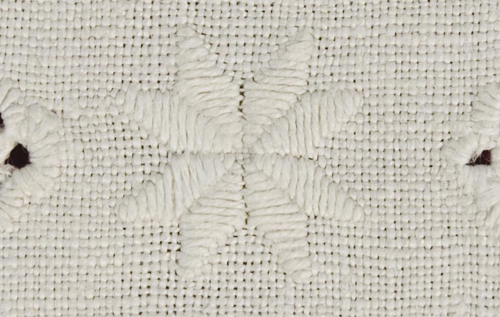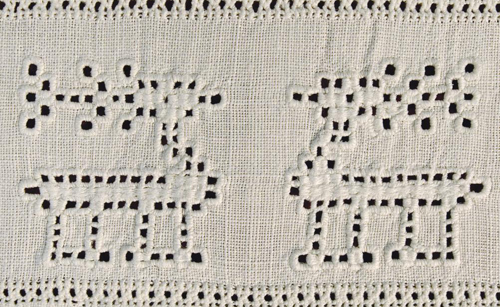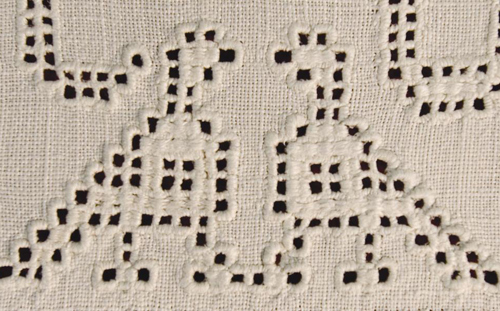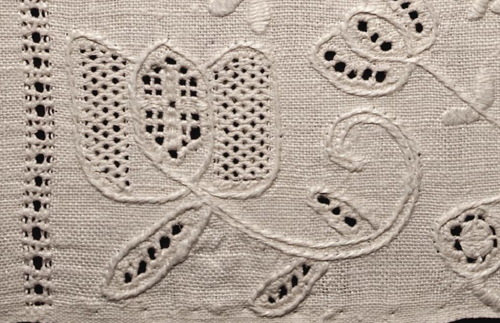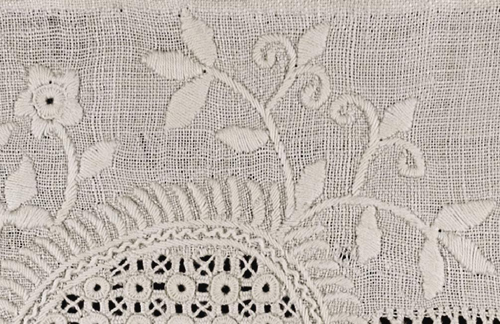Trees and flowers appear in all variations of Hedebo Embroidery. The Tree of Life takes many forms: naturalistic, as a tree trunk with branches; in a highly stylized version, as an arboreal palm, planted in the urn of life or a vase etc. The Tree of Life is an ancient symbol of creative power and fertility. From Norse mythology, we know of Yggdrasil, the World Tree. The tulip, frequently used in Hedebo Embroidery, is considered the flower of the Hedebo area. In textile art, it is known from Persian decorations and was likely introduced into European patterns during the Baroque period when bulbous plants became a symbol of exclusivity and modernity. The pomegranate became a cherished motif in Hedebo Embroidery, perhaps because its seeds suited the openwork and fillings of "Hvidsøm" and "Baldyring". Many of these motifs also appear in other peasant textiles from the Hedebo area, such as woolen embroidered blankets, and in other forms of interior decoration, including furniture and wood panels.
Hedebo Embroidery and Motifs
Hedebo Embroidery features a variety of motifs that reference Christianity, other religions, and Norse mythology. It is unclear whether the women who created the Hedebo Embroidery recognized the symbolic significance of these motifs. Perhaps the women reproduced the motifs because they admired their beauty, found them suitable for their skills, or felt they complemented the overall composition of the embroidery. Nevertheless, it is intriguing to consider the symbolic connotations the women may have mirrored in their embroidered textiles. The motifs often appeared in pairs within a symmetric composition.
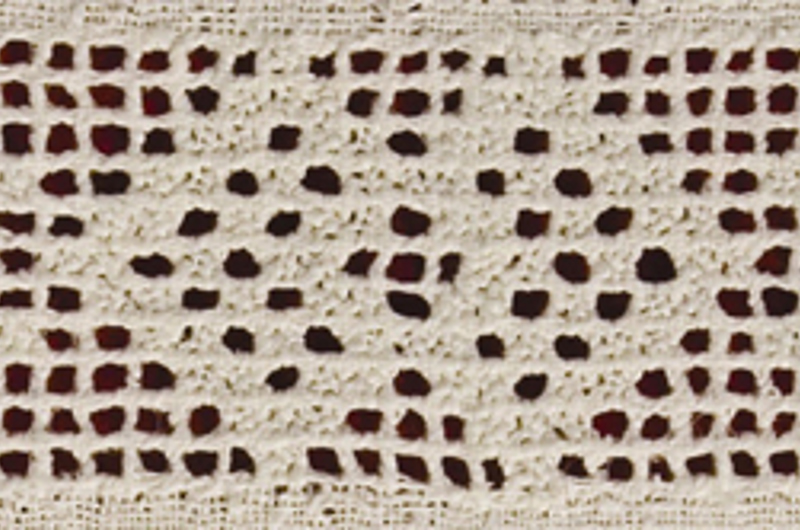
Two squared hearts sewn in drawn thread work.
Geometrical Symbols
Most of the Hedebo Embroidery variations feature different geometric patterns. The distinctive eight-pointed star appears in nearly all of them. Like many other motifs, this star symbolizes Christ. However, it also represents the Northern Star, symbolizing the Nordic people and their folk cultures. In India, the eight-pointed star is also regarded as a universal symbol. The rosette and the heart became especially characteristic shapes in "Udklipshedebo".
Fauna
Drawn thread work and square cut work often feature animal motifs, many of which have significance in Christianity and other religions. Horses, cockerels, pigeons, eagles, and possibly deer were familiar to the women in their everyday lives, but what about lions, peacocks, and the firebird/Phoenix? It’s likely that the women copied these motifs from other embroideries and pattern books. We don’t know if they chose the motifs to add extra meaning to the textiles, or if they selected them for their aesthetic value, technical challenge, or because of a desire for variety. Did the women know that the lion, eagle, and firebird/Phoenix were symbols of Christ and the resurrection, and also referenced pre-Christian art in both the Middle East and among ancient pagan cultures?
Flora
